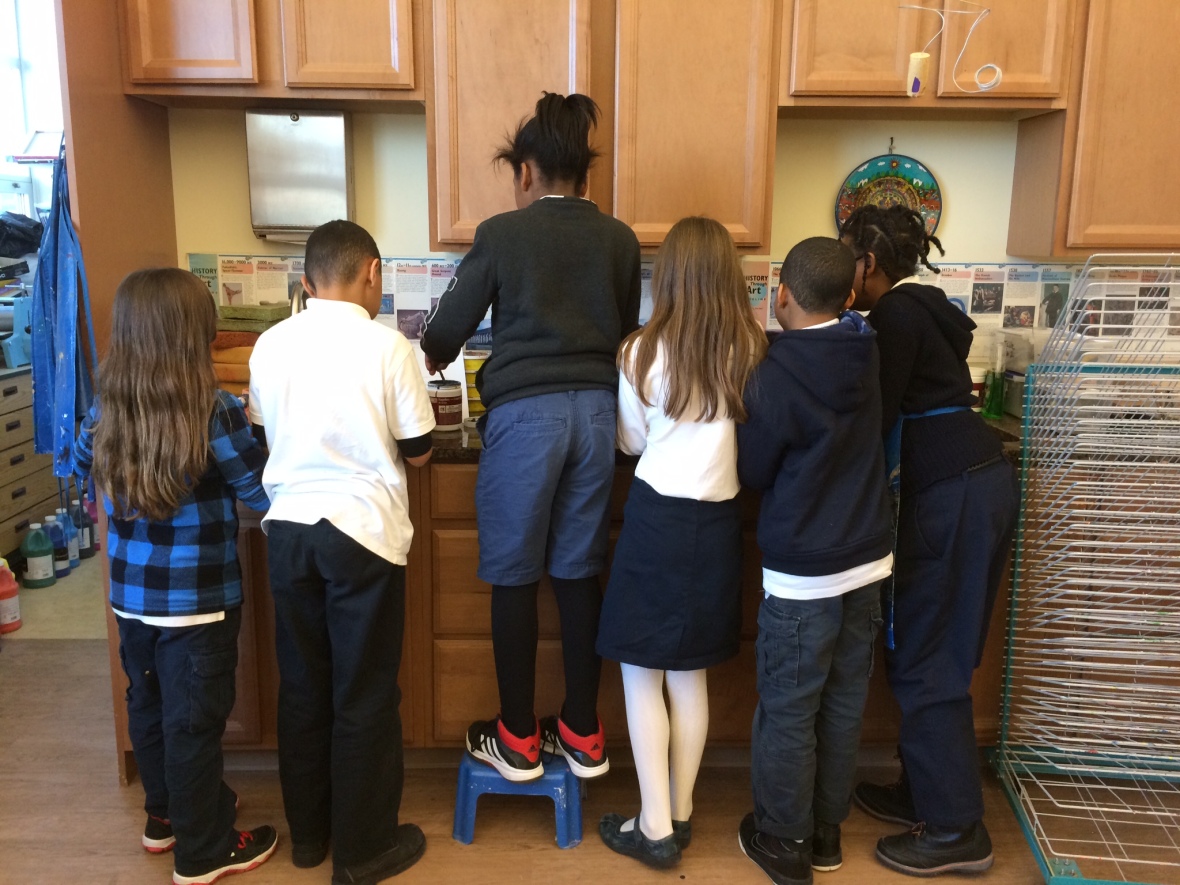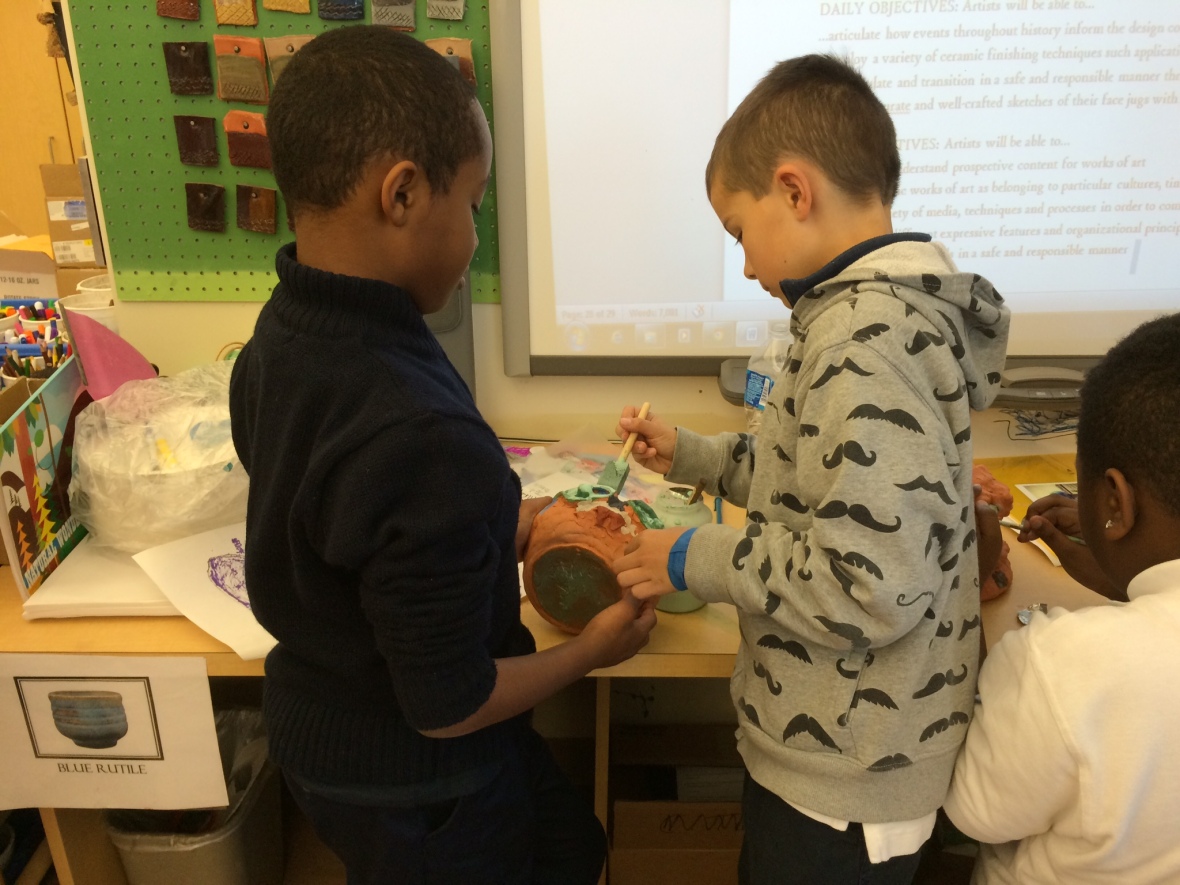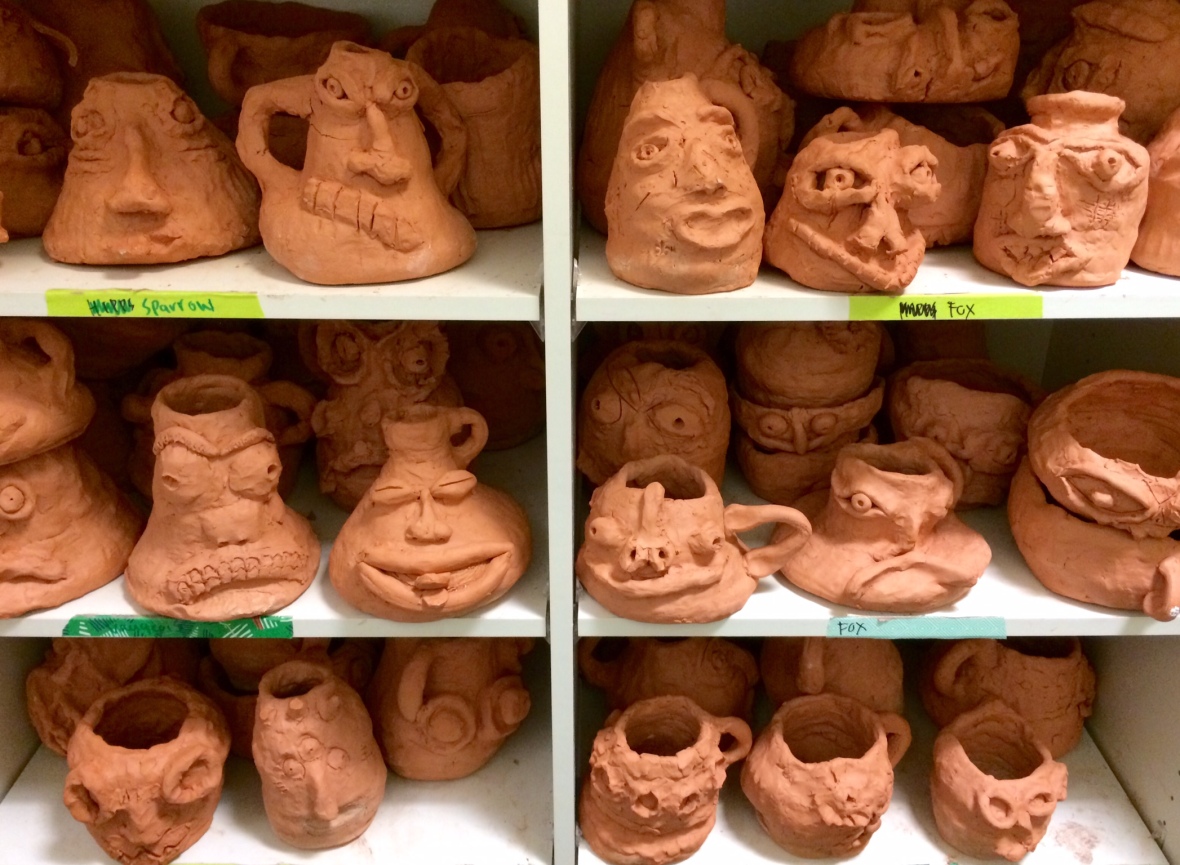 Appalachian State University, Boone, North Carolina (Ms. Bomba’s Alma Mater)
Appalachian State University, Boone, North Carolina (Ms. Bomba’s Alma Mater)
When I was just a freshman at Appalachian State University, in the Blue Ridge Mountains of Western North Carolina, I remember one of my very first art assignments. My ceramics professor asked us to use traditional handbuilding techniques to recreate a vessel from any culture, civilization or time period throughout history in order to better understand how the body of the vessel served both a functional and aesthetic purpose to the user. You see, I was majoring in creative writing and literature and doing studio art on the side, so it felt natural to want to connect what I was learning in the English department with what I was creating in the Art department. The inspiration for my ceramics project came from something I had just finished learning about in my Appalachian Folklore class. I remember reading about the folk potters of the south who created face jugs, or ugly jugs, and was fascinated by the origins of this folk tradition. After diving deeper, I learned that Face Jugs were a form of craft media that originated during slavery by the potters that were brought over illegally from Africa, more specifically, from the Congo, and forced to work in the southern potteries during the Civil War. Due to the abundance of rich clay, slaves were forced to work in potteries making functional wares for the war effort. By day, the black potters were creating bowls and cups for soldiers and come night time, were working in secret to create special ceramic vessels for their own purposes.
 A face jug uncovered in the Edgefield region of South Carolina and dating back to around the 1850s
A face jug uncovered in the Edgefield region of South Carolina and dating back to around the 1850s
Because slaves were denied most basic civil rights, like voting, drumming, or owning grave makers to mark a burial site, they found ways to create objects that held secret meaning for them and their loved ones. Research suggests that face jugs served a functional purpose, like holding rice and grains while the owner of the jug was living, but once deceased, the jug was placed on the burial site and the spooky face was used to scare away the devil so that the soul of the deceased would make it to heaven uninterrupted. In turn, the jugs were a combination of African cultural tradition and Christianity.  A contemporary example of a Face Jug from Ms. Bomba’s collection. Notice the porcelain teeth made from shattered china.
A contemporary example of a Face Jug from Ms. Bomba’s collection. Notice the porcelain teeth made from shattered china.
 Potters traditionally sign their work on the foot of the vessel. This jug is from Seagrove, NC, where a community of potters specialize in making ceramics in the traditional way.
Potters traditionally sign their work on the foot of the vessel. This jug is from Seagrove, NC, where a community of potters specialize in making ceramics in the traditional way.
 This jug was given to Ms. Bomba and her husband as a wedding gift from her father in law. He told the potter to make the biggest and ugliest jug possible. He knows me so well!
This jug was given to Ms. Bomba and her husband as a wedding gift from her father in law. He told the potter to make the biggest and ugliest jug possible. He knows me so well! Here is the very jug Ms. Bomba made for her ceramics class her freshman year. She used traditional handbuilding techniques and a rust patina to get the aged look on the surface.
Here is the very jug Ms. Bomba made for her ceramics class her freshman year. She used traditional handbuilding techniques and a rust patina to get the aged look on the surface.
In class, I am always encouraging my young artists to use context, be it personal, experiential or historical, to draw inspiration and add meaning in their artwork. This can be difficult to do when you’re only 9 years old and there is still so much life and knowledge to experience. Luckily, the teachers at Maury are committed to deepening each student’s ability to create context, whether through reading, history, science, field-trips or their special subject classes, so that they can connect with the information they are learning, expand their knowledge and retain information in a meaningful way.
This year, I gave my 4th and 5th graders an art assignment very similar to the one I received as a freshman in college. I asked them to apply everything they had learned about handbuilding to create a ceramic face jug that tied some aspect of the history to their vessels. Some pulled from the African cultural beliefs of the Congolese people, others brought to life the hardships of the journey across the Atlantic as illegal human cargo during the slave trade, others reflected on the Civil War, agriculture and farming on southern plantations, or the resilience of the black potter, from slave to freedman.
 As February winds down and we conclude another celebration of the inventive and inspiring ways African Americans have made contributions to the world we live in, I could not be prouder of the thoughtful and artistic ways our students paid tribute to many of the brave, African American Changemakers that used art as a means of expression and advocacy. More about our journey of creating face jugs can be read about in the March edition of the Hill Rag or below, as we documented the process from start to finish. Please come visit the lobby and both stairwells of the East wing at Maury Elementary to see these ceramic marvels on display in person. For more historical information, I have attached a link to a video created by PBS tracing the origins of one particular face jug artifact all the way back to Africa. Enjoy!
As February winds down and we conclude another celebration of the inventive and inspiring ways African Americans have made contributions to the world we live in, I could not be prouder of the thoughtful and artistic ways our students paid tribute to many of the brave, African American Changemakers that used art as a means of expression and advocacy. More about our journey of creating face jugs can be read about in the March edition of the Hill Rag or below, as we documented the process from start to finish. Please come visit the lobby and both stairwells of the East wing at Maury Elementary to see these ceramic marvels on display in person. For more historical information, I have attached a link to a video created by PBS tracing the origins of one particular face jug artifact all the way back to Africa. Enjoy!
Step 1: Familiarize ourselves with how to manipulate the clay in preparation for some serious art making. That includes learning how to make slabs, roll coils, score and slip our clay for maximum adhesion and smooth coils. We used a check list and had our peers sign off for us once we mastered a skill. We also used conversation boards to document and reflect on our Inquiries, Challenges and New Discoveries throughout our guided discovery of clay.
Step 2: Handbuild our own unique ceramic face jugs that reflect an aspect of the tradition
Step 3: Let the greenware sit out until chalky and bone dry, then load the kiln for the bisque firing, where all the water and air, along with organic materials, will combust at extremely high temperatures
Step 4: Unload the bisque firing and wax the base of the jugs so that the glaze doesn’t run and stick to the kiln shelves, add engobe to the eyes and teeth, and glaze!












 Step 5: Unload the glaze firing and admire our finished product!
Step 5: Unload the glaze firing and admire our finished product!





















































